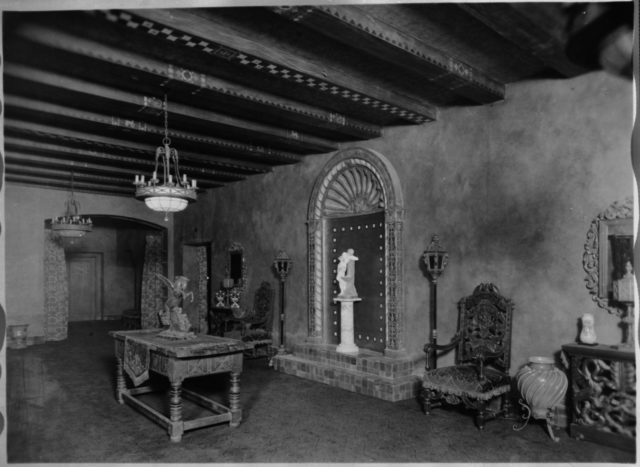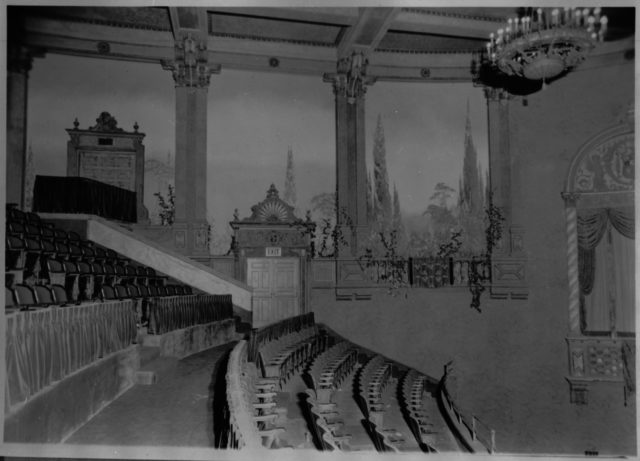Venturing to describe the Carolina Theatre when it opened in 1927, a Charlotte journalist declared, “It is alive, and the audience itself is a part of the alluring picture.” The belief that theatergoers could be transported to an exotic locale, and feel like active participants in a fantasy world, rather than passive, aloof observers, was a defining feature of the atmospheric theaters that became popular in the United States during the 1920s. Architects designed atmospherics like the Carolina—sometimes called “stars-and-clouds” theaters—to create the feeling of watching a film outside, under a starry sky, in such fanciful and enchanting settings as Italian gardens, open-air Persian courtyards and Spanish patios.

In this vein, the original Carolina Theatre, created by Charlotte architect C. C. Hook and New York theater designer R. E. Hall, drew moviegoers into a richly drawn, make-believe world, blending elements of European décor to suggest an exotic—and above all, regal—environment. The theater’s eclectic exterior, replete with a wrought iron ticket booth and decorative tile roof, hinted at the marvels to be found inside. As described by the Charlotte Observer, the main lobby was imitative of a grand outdoor patio, surrounded by “picturesque facades of old world palaces, colonnades of graceful arches, romantic balconies, the tower of ancient castles and the mystical beauty of an old Spanish cathedral window.”

From these rich surroundings, audiences entered the theater itself, where they could gaze up into “the deep blue of the Mediterranean sky, with an occasional twinkle of a far-off star, and the restful tranquility of fleecy clouds slowly drifting by,” and admire the graceful white pigeons and brightly-colored parrots that were “perched here and there.” Climbing vines, tropical foliage, a bounty of flower arrangements and a proud peacock, surveying his surroundings from atop a high balcony, completed the illusion.
It is little wonder that a pioneer of the early motion picture industry famously declared, “We sell tickets to theaters, not movies.”
Sources:
Richard Koszarski. An Evening’s Entertainment: The Age of the Silent Feature Picture, 1915-1928. New York: Charles Scribner’s Sons, 1990.
Ben M. Hall. The Best Remaining Seats: The Golden Age of the Movie Palace. New York: De Capo Press, 1988.
David Naylor. American Picture Palaces: The Architecture of Fantasy. New York: Prentice Hall Press, 1981.
“Carolina Theater Places Charlotte in High Class As Amusement House Center,” Charlotte Observer, March 6, 1927.